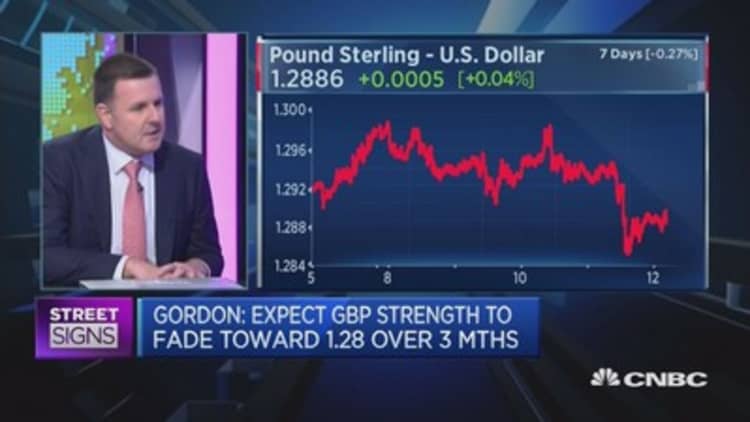The dollar fell on Monday, touching lows against a number of currencies after a weak U.S. manufacturing report compounded a bounce in commodities prices that drove the greenback lower.
The New York Federal Reserve's barometer on business activity in the state unexpectedly fell in May, sinking into negative territory for the first time since October.
Analysts cautioned that the index's downturn could be a harbinger of a possible deterioration in the manufacturing sector.
"We have been expecting some cooling in the manufacturing sector following a solid start to the year, but if the Empire State survey's orders index proves to be a reliable forward-looking indicator, the slowdown could be more severe than we had been anticipating," J.P. Morgan economist Daniel Silver wrote in a research note.

The euro rose to a one-week high of $1.0989 against the dollar after the data, while the dollar hit a one-week low against the Swiss franc of 0.9958 franc. The euro was last up 0.45 percent against the dollar at $1.0977, and the dollar was last down 0.44 percent against the Swiss franc at $0.9961.
"The data was weaker than expected, and the consensus was for it to increase ... so that further contributed to today's dollar weakness," said Eric Viloria, senior currency strategist at Wells Fargo Securities.
"The other factor influencing currency movements at least today is the sizable move in commodity prices and oil in particular because when we look at which currencies are showing larger movements, it's the more commodity-sensitive currencies."
The hit its highest level in over two weeks and the hit a 12-day high as crude oil futures jumped and metals got a boost, strengthening the currencies of countries with economies that are highly correlated to material exports.

Saudi Arabia and Russia agreed on Monday to extend oil output cuts until March 2018 to rein in a global crude glut, pushing up prices by as much as 2 percent and dominating trade on European currency markets.
That gave the Canadian dollar a 0.7 percent lift, to its highest since April 27.
With prices of iron ore also rising, Australia's dollar hit a 12-day high of $0.7444, while the New Zealand dollar rose by as much as 1 percent to $0.6915. The Australian dollar was last up 0.39 percent against the U.S. dollar at $0.7414. The New Zealand dollar was last up 0.19 percent against the U.S. dollar at $0.6875.
Weekly positioning data from the Commodity Futures Trading Commission showed speculators are net long the euro for the first time in around three years, as well as net long Australian
dollars, which helped the Aussie move away from last week's four-month lows.

